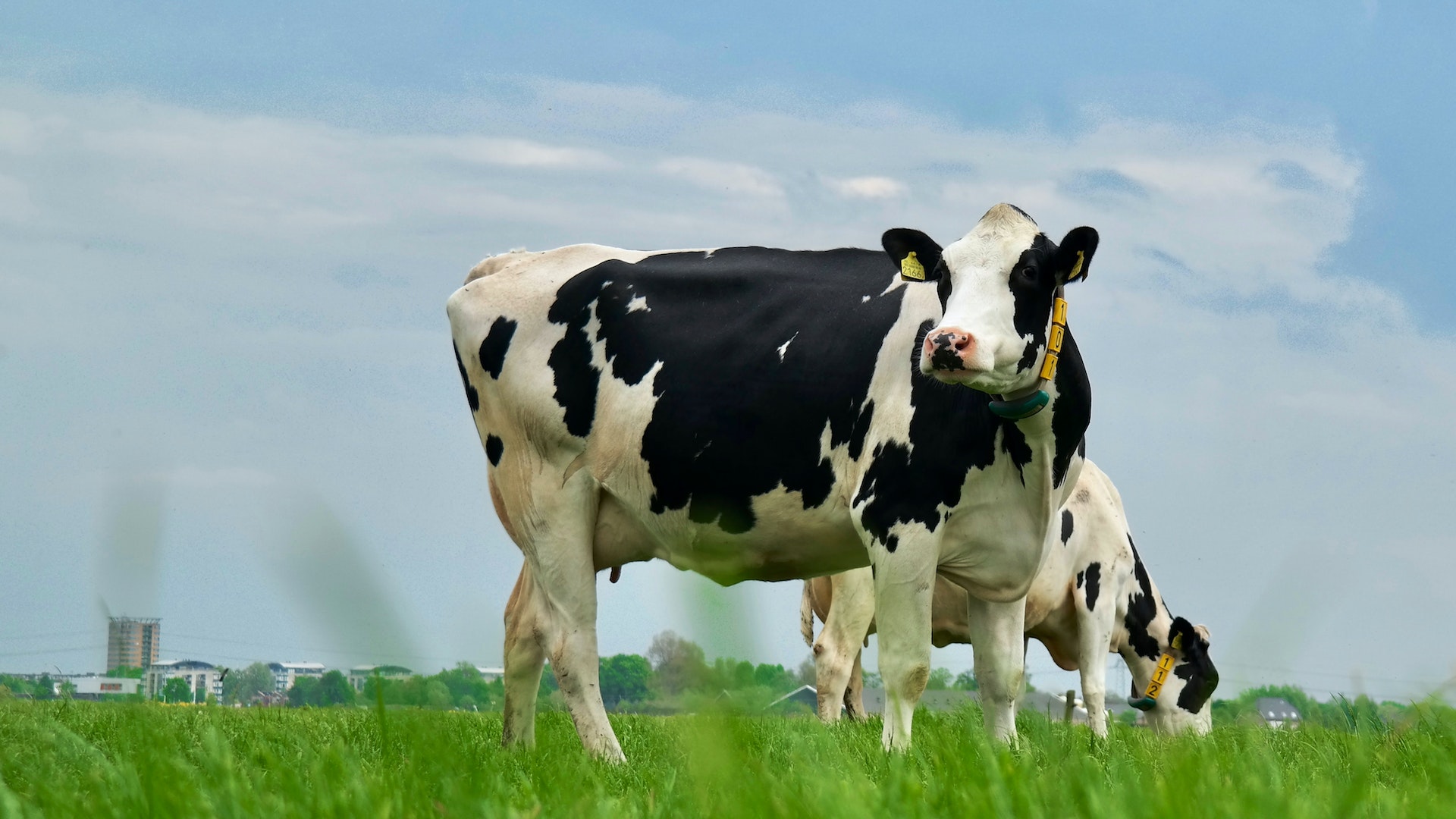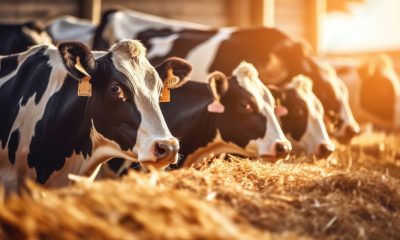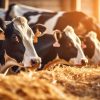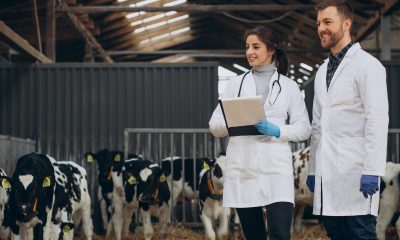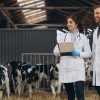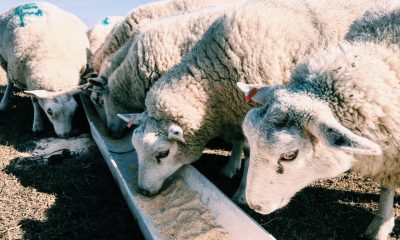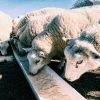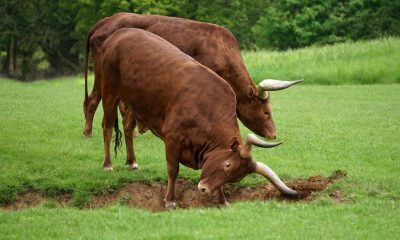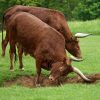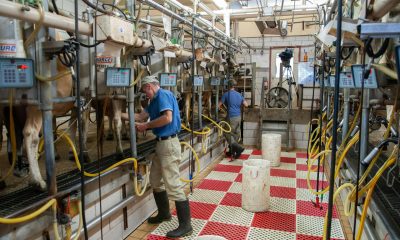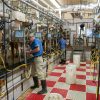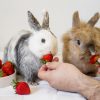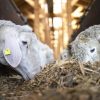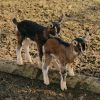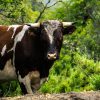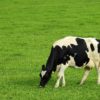The black and white cows are a perfect illustration of dairy production across the world. These patterned cows are called Holstein cows, and they were first domesticated in Friesland. Large dairy cattle like Holsteins cows were first domesticated in northern Holland and Friesland. They are regarded as the benchmark in the dairy industry because of their abundant milk production. Let us take a closer look at some more of these patterned cows, their traits, where they came from, and how Grand Master will support these cattle.
Origin of Holstein Cows
The Holstein cow is the most common breed of dairy cattle in the United States and possibly the most widely known breed worldwide. Holsteins were deliberately bred and culled for many years to ensure a breed that would benefit the most from the region’s plentiful grass supplies. This method produced a robust, effective breed that is today utilized for dairy production in more than 150 nations. A group of Batavian and Friesian breeders refined the breed in the early 18th century to increase milk output. Butterfat content and structure were enhanced after 1945. Bulls selected to improve these three traits ensure the breed’s significant genetic progress and success through their progeny (only black males were chosen, but good red cows were kept), gradually spreading throughout Holland and the northwest of France and eventually becoming known as “Dutch” cows. Originally called Holstein-Friesians, this breed is now more often referred to as just Holsteins. Despite being distinct from the Holstein breed, Friesian cattle exist today. Breeds of Friesian cattle originating from the United Kingdom, New Zealand, and Holland often have smaller bodies than Holstein cattle. The Friesian breed, which is related to the Holstein, is still well-liked by dairy farmers. Despite having a lower milk production capability and a smaller body than Holsteins, they are nonetheless produced. Today, some Friesian breeds live in England, Holland, and New Zealand.
Northern Europe has been unrivalled in the production of cattle and dairy products since the thirteenth century. Some reports indicate massive animals weighing up to 3000 pounds apiece. The region was also well-known for its large butter and cheese production capacity. Over the years, the continual breeding procedure used by breeders in northern Holland and Germany has resulted in superiorly efficient breeds. The major goal of these breeders was to take advantage of the area’s extensive grasslands. Their breeding and selection procedures are commonly regarded as the greatest in the world.
Characteristics of Holstein Cows
While some cows may live much longer, the average productive life of a Holstein cow is six years. Here are some of the peculiar characteristics of Holstein cows that make them the greatest milk producers. A healthy Holstein calf weighs at least 90 pounds at birth.
· A mature Holstein cow is 58 inches tall at the shoulder and weighs roughly 1500 pounds. Holstein heifers can be bred at 15 months old when they are roughly 800 pounds in weight.
· The first calving of Holstein females occurs between 24 and 27 months of age.
· The gestation period in Holsteins lasts around nine months.
· This Holstein Friesian breed produces milk with high levels of protein and fat. This milk typically contains 3.7% butterfat and 3.1% protein, while there may be modest fluctuations due to climatic and feed changes.
When everything is considered, the dairy farmer that milks Holsteins will benefit more. Holstein dairy cattle dominate the sector for producing milk in this nation. It is obvious why they are so well-liked:
· Produce more milk than any other animal
· More earning capacity proportional to their feed
· Superior genetic qualities
· Able to adapt to a variety of environmental factors
Uses of Holstein Breed
Holsteins have traditionally been utilized solely as dairy cows. The breed accounts for 90% of all dairy cattle in the United States. Holsteins, on the other hand, may be utilized to produce meat, notably veal. Young Holsteins gain weight fast, which is another advantage for meat producers. Holsteins are frequently crossbred with beef varieties of cattle to increase meat quality. Holsteins are an ideal dairy breed for both small farms and huge industrial farms alike. Part of their early development as a breed concentrated on generating a cow who would produce the greatest milk on the least amount of food feasible. This efficiency enables small-scale farmers to obtain the maximum milk production out of their Holsteins while spending the least amount of money. Holsteins can also be maintained on the pasture or in a barn full-time. They adapt well to either circumstance, making them simple to raise regardless of the available area.
The breed originated about 2000 years ago in the meadows of northern Europe and is now widespread worldwide. The world’s great milk production capacity is partly owed to the discovery of this one breed, the Holstein cows. Grand Master is a reputable and internationally renowned specialist in animal feed that can provide high-quality goods in the Indian animal health industry. Grand Master has prior experience in cattle feed with meticulous manufacturing with an inclusive range of products comprised of Grand Master Basic Cattle Feed, Grand Master Economy Cattle Feed, Grand Master Plus Cattle Feed, Grand Master Deluxe Cattle Feed, Grand Master Rice Bran De Oiled Cattle Feed, Grand Master Orid Husk Cattle Feed, Grand Master Maize Cattle Feed and Grand Master Wheat Bran Cattle Feed etc. For the ease of clients, we also provide tailored packaging solutions.
Grand Master is prospering as a leader in animal feed products on a worldwide scale because they are open to change. We want to keep providing people to their farm with high-quality goods and, in doing so, help foster a desire for cattle feed products among the next generation of purchasers.
